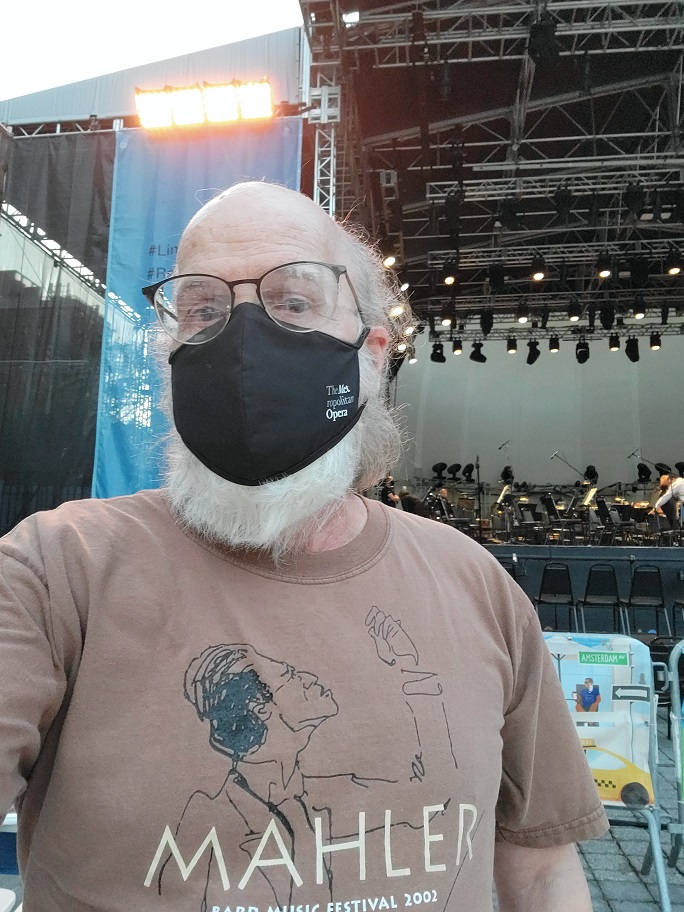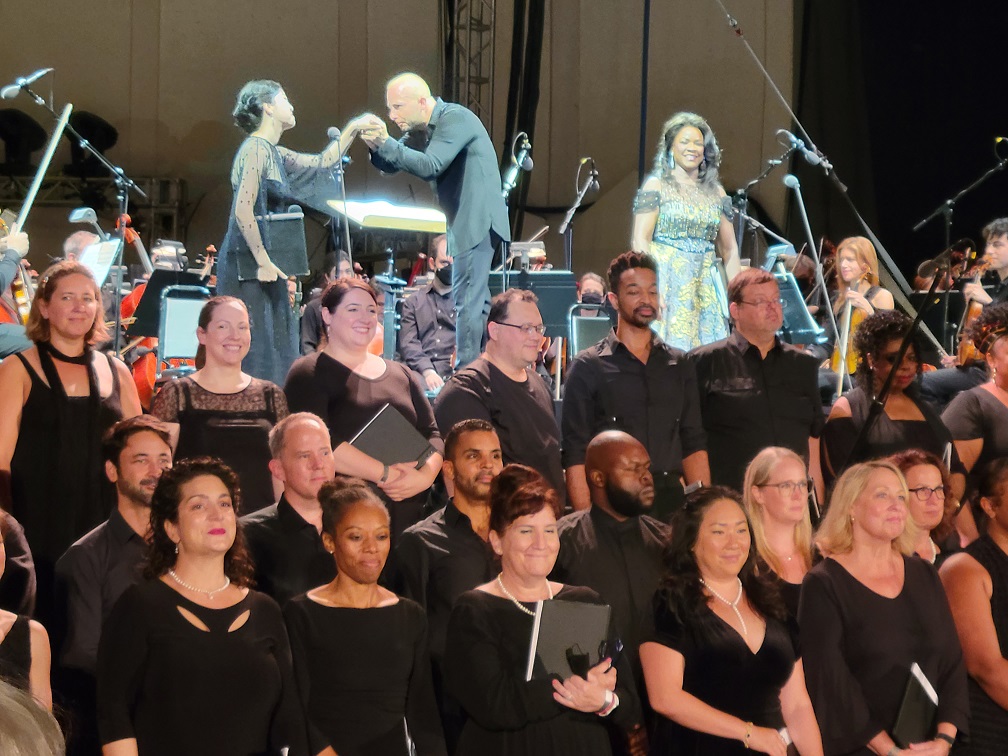Concert Diary: Mahler's 2nd Symphony
September 4, 2021
New York, NY
Live music shall rise again!
This was the not-so-subtle message when the Metropolitan Opera Orchestra and Chorus performed Gustav Mahler’s 2nd Symphony (called the “Resurrection") this evening in Damrosch Park, their first performances at Lincoln Center in 17 months. In the final movement, the chorus sings “Aufersteh’n, ja aufersteh’n wirst du” — “Rise again, yes you will rise again” — and Mahler’s music convinces us that resurrection (or in this case, recovery from the isolation of COVID) is indeed possible.
Of course, COVID is still a profound presence. On entry to the park, our vaccination cards were checked against IDs, and we were required to wear masks for the duration of the concert. Nobody complained, of course. We are New Yorkers; we do what’s necessary, and some of us even do it with style.

Damrosch Park isn’t the best environment for live music. Sometimes an ambulance goes by; more often helicopters fly over. But the biggest problem is a constant drone of — I’m not sure what. Air conditioning systems in nearby buildings, perhaps? But the energy of the orchestra and conductor Yannick Nézet-Séguin (Music Director of the Metropolitan Opera) more than compensated. Mahler demands a large orchestra, and it was spread out over a platform in front of the bandshell. Curiously, the chorus filed out in front of the stage on audience level, and sat with their backs to us!
I first heard a recording of Mahler’s 2nd Symphony a few years ago during my freshmen year of college, and it has never ceased grabbing me viscerally. Mahler’s music is full of stark contrasts — big symphonic crescendos mixed with lighter passages with the texture of chamber music, darting between emotions of pathos, terror, exhilaration, and triumph. The two long outer movements of the 2nd Symphony are dramatic journeys, but the movement that sounds stranger to me every time I hear it is the weird central scherzo.
Soprano Ying Fang and mezzo-soprano Denyce Graves came out on stage after the first movement, during the pause that Mahler wanted to be five minutes in length but which most conductors cut short. Denyce Graves gave a lovely performance of the moving 4th movement song, “Urlicht.”
In the final movement, the chorus remained facing away from the audience during their spooky quiet entrance that always sends chills up my spine. But as they begun “Was entstanden ist, das muss vergehen!” — “What was created must perish” — the chorus rose, turned towards the audience, and the lights came up on them. It was very dramatic!
Of course, now facing away from the conductor, the chorus could only follow his direction on a couple of large monitors rigged up on either side of the audience. This is quite similar to what’s done in opera houses these days.
I didn’t take any photos during the performance, but here’s Yannick and the two singers soaking up audience applause, with a fraction of the chorus in front of the stage:
